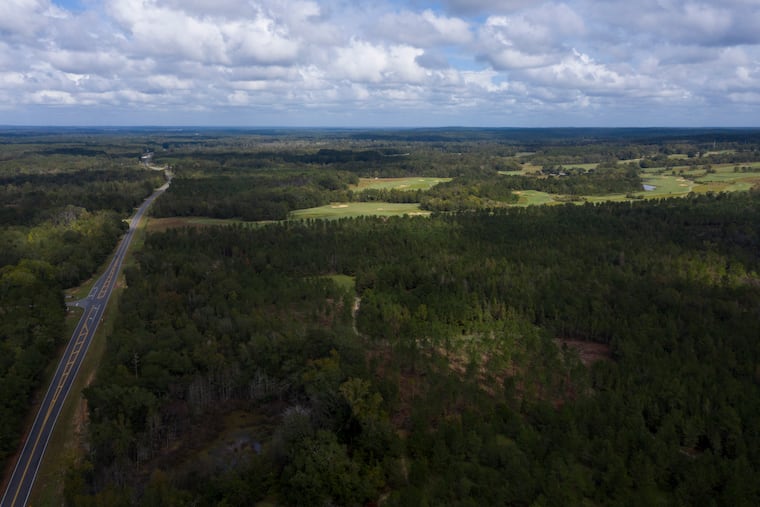Wealthy investors seem to be exploiting land-conservation tax breaks, and the Senate is taking notice
“These transactions really have nothing to do with conservation and everything to do with claiming tax deductions," an expert said.

Clay County sits in a remote southwestern corner of Georgia, more than 60 miles from any interstate, with no hospital, pharmacy, red light, or high school inside its borders. Yet in 2013, developers claimed more than $12.1 million in tax write-offs by promising to protect hundreds of acres of undeveloped land from a major construction project: an 800-unit seniors housing facility, according to a report from the U.S. Senate Finance Committee.
Conservation easements — tax breaks granted to protect undeveloped land — have become an increasingly common practice over the last decade, especially in Georgia.
Syndicated conservation easements, such as the one in Clay County, grant write-offs to multiple partners, each buying a share in a tract of land. They are attracting increased scrutiny from lawmakers and the IRS as a means for the wealthy to avoid paying their appropriate share of taxes.
As of February, about 84% of syndicated easements were in some stage of an IRS audit, according to the finance committee report, which was released in August. The report found that about $10.6 billion of tax revenue was lost to syndicated easements between 2010 and 2017. And lawmakers in September introduced a new bill aimed at closing such loopholes.
The IRS publicly flagged syndicated conservation easements in December 2016, and the Department of Justice filed suit against several Georgia-based promoters two years later. But the amount of tax revenue lost to easements continues to grow. IRS data shows total deductions claimed through syndicators rose to $9.2 billion in 2018 from $6.8 billion in 2017.
“The IRS shamed these scammers by publicly listing these transactions, but the continued growth in their numbers shows that shame alone won’t do the trick,” Sen. Charles Grassley (R., Iowa) said in September. “Now it’s the job of Congress to clearly prohibit these abusive schemes.”
If it becomes law, a Senate bill would prevent entities’ taking a charitable deduction greater than 2.5 times what was paid for the land.
Conservation easements grant tax write-offs for the value that a piece of land loses to remain undeveloped when it might otherwise become apartments or a big-box store, prioritizing what has been described as “cows over condos.”
The syndicated deals targeted by the Senate bill involve land that was likely never going to be developed anyway. They rely on a sharply inflated appraisal, the finance committee report found, sometimes valuing land at more than 250 times what was paid for it just a few years prior, then writing off the difference in value once the easement is granted.
“These transactions really have nothing to do with conservation and everything to do with claiming tax deductions,” said Adam Looney, a senior fellow at the Brookings Institution. “Many of these transactions are designed just based on the financial incentives to save money on taxes. The conservation value, the whole public purpose of the subsidy, is not part of the analysis or part of the transaction.”
Promoters, mostly in the Southeast, who organize the deals, finding the land, and marketing it to potential investors, have discovered a business model to sell “investments” in sham projects, according to the Senate Finance Committee report. As part of their operation, the promoters vote on an easement and then share millions of dollars in tax write-offs with those investors after the easement is granted. Generally, these efforts save $2 in taxes for every $1 paid into the tax shelter, according to the Senate report.
Under current law, those tax write-offs can be distributed among multiple partners, with emails included in the Senate report showing clients essentially placing orders for how much easement write-off they’d like to buy.
“This is the only area of law where a taxpayer can claim a charitable deduction for giving away something that they can still use for themselves,” Looney said. “And they have an enormous amount of autonomy over how much the donation is worth.”
According to an analysis by Looney, 36% of all easement deductions nationally between 2010 and 2012 were claimed by Georgia taxpayers. One individual in Rome made $1.5 million arranging three easements in 2016 alone, the Senate report found.
Why Georgia? No one is sure.
“Why did Silicon Valley become Silicon Valley? Just a handful of guys in and around Rome invented this,” Looney said. “I assume they all know each other. They had some mix of legal knowledge, experience in real estate translations, tax planning services, and then they figured out they could supercharge it with these syndications. I don’t think it takes a lot to become the largest player in the conservation easement space.”
One of the biggest questions surrounding conservation easements is whether they'd be suitable for building if left unprotected. Clay County's population today is less than half what it was 100 years ago, with thousands of acres sitting undisturbed and unlikely to see development.
The 227-acre Clay County property originally sold for $609,246, was appraised at $12.4 million, factoring in the seniors’ development, then valued at $295,100 after an easement was granted. The result: $12.1 million in tax write-offs that were split among several investors, as noted in the Senate report.